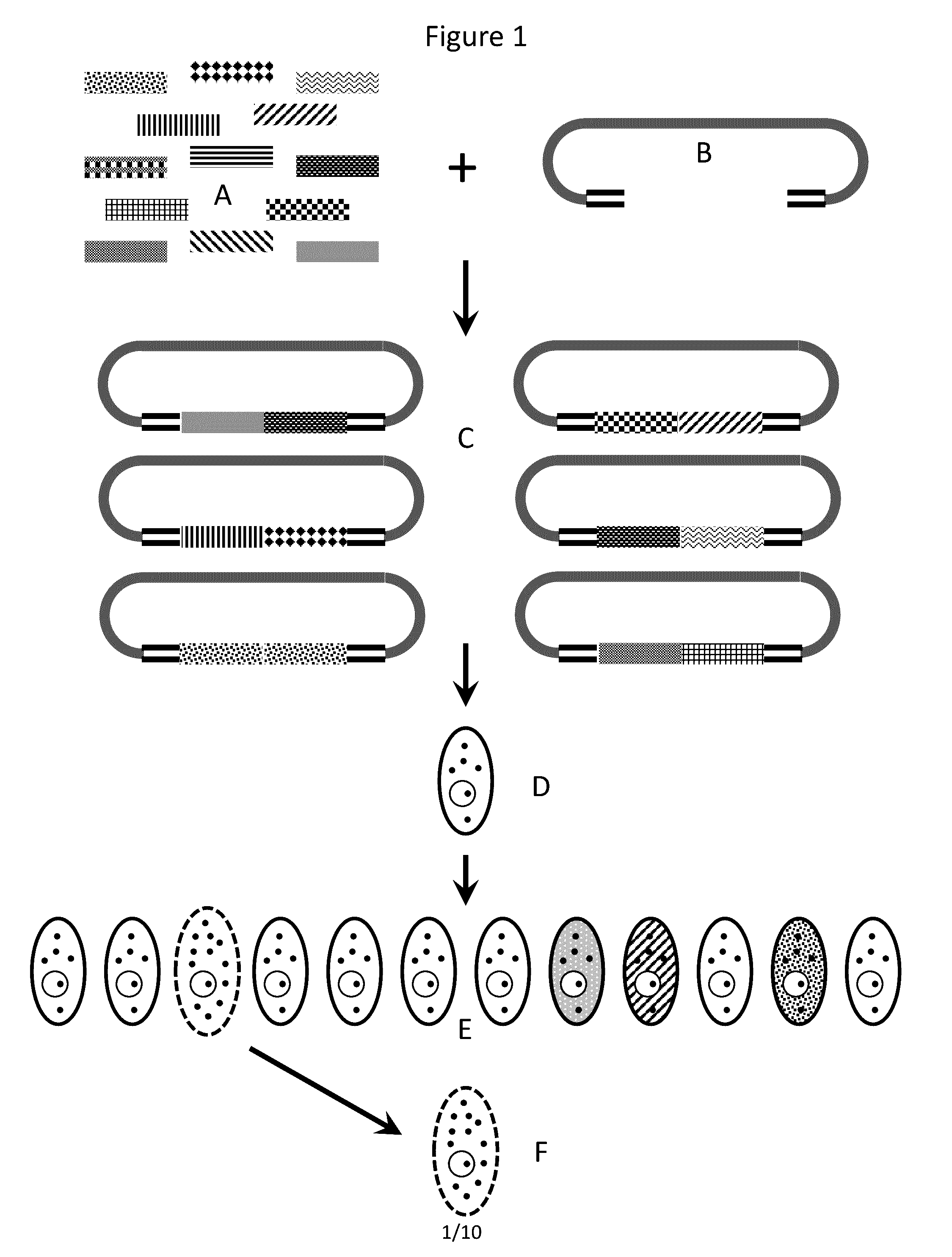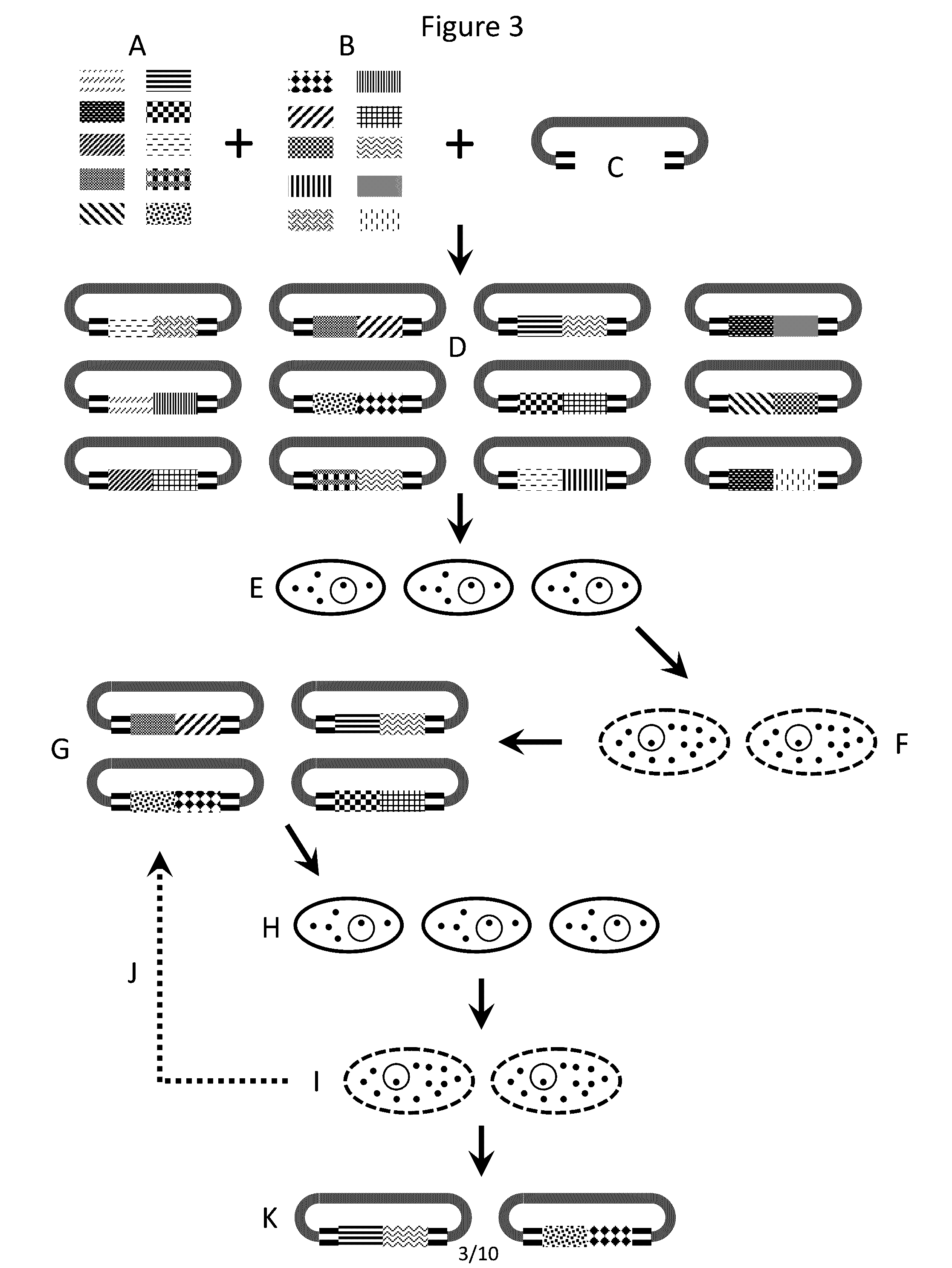Methods and compositions for creating altered and improved cells and organisms
- Summary
- Abstract
- Description
- Claims
- Application Information
AI Technical Summary
Benefits of technology
Problems solved by technology
Method used
Image
Examples
example 1
Isolation of Randomized In-Frame Fusion Polynucleotides Capable of Conferring Heat, Salt, Ethanol and Butanol Tolerance to Saccharomyces Cerevisiae
[0075]Product tolerance traits of production microbes are important factors that contribute to maximal yields and titers of fermentation products (Ding 2009, Jia 2009, Dunlop 2011). Ethanol and butanol are industrial products that are toxic and therefore the subject of various efforts aimed at increasing the tolerance of yeast cells to these alcohols. Butanol is featured as a target of this example because it is representative of medium-chain fuels and chemicals, many of which have high toxicity and whose production is being attempted and optimized in microbes (Dunlop 2011, Jang 2012, Lee 2012). Butanol is a chemical feedstock used for the production of many other chemicals (Mascal 2012). Tolerance to heat, salt and low pH are also industrially relevant properties of production organisms as many production systems generate heat, are cond...
example 2
Isolation of Randomized In-Frame Fusion Polynucleotides Capable of Conferring Stress Tolerance to Escherichia Coli
Producing an E. Coli Collection of Randomized In-Frame Fusion Polynucleotides
[0121]A collection or library of E. coli randomized in-frame fusion polynucleotides is prepared as described in U.S. patent application Ser. No. 14 / 134,619 and International Patent Application Serial Number PCT / US13 / 76526. The randomized in-frame fusion polypeptides are cloned into a vector molecule (SEQ ID NO:128). This vector is derived from the pUC19 high-copy plasmid and contains sequences for the ampicillin / carbenicillin resistance gene, pMB1 plasmid origin of replication, and the E. coli lac promoter and terminator. The vector is PCR amplified using oligonucleotides PG0185A (SEQ ID NO:129) and PG0188A (SEQ ID NO:130) for use in assembly of the randomized in-frame fusion polynucleotide collection.
[0122]Each 5′ ORF prepared for the randomized in-frame fusion polynucleotide collection is fla...
PUM
| Property | Measurement | Unit |
|---|---|---|
| Length | aaaaa | aaaaa |
Abstract
Description
Claims
Application Information
 Login to View More
Login to View More - R&D Engineer
- R&D Manager
- IP Professional
- Industry Leading Data Capabilities
- Powerful AI technology
- Patent DNA Extraction
Browse by: Latest US Patents, China's latest patents, Technical Efficacy Thesaurus, Application Domain, Technology Topic, Popular Technical Reports.
© 2024 PatSnap. All rights reserved.Legal|Privacy policy|Modern Slavery Act Transparency Statement|Sitemap|About US| Contact US: help@patsnap.com










